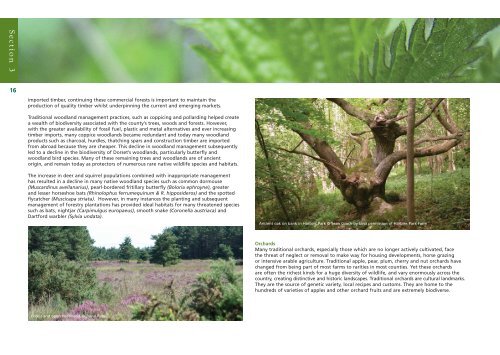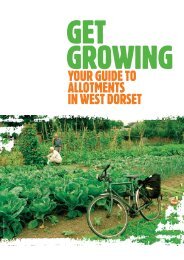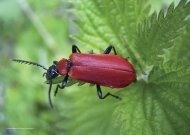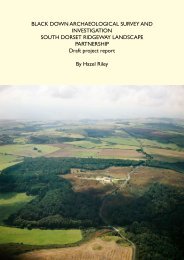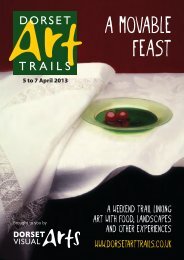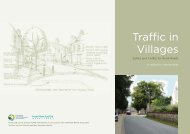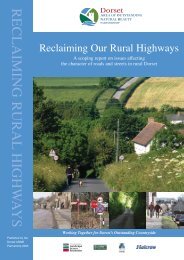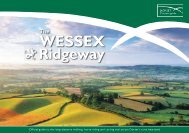Woodland Strategy 11.34 Mb - the Dorset AONB
Woodland Strategy 11.34 Mb - the Dorset AONB
Woodland Strategy 11.34 Mb - the Dorset AONB
Create successful ePaper yourself
Turn your PDF publications into a flip-book with our unique Google optimized e-Paper software.
Section 3<br />
16<br />
imported timber, continuing <strong>the</strong>se commercial forests is important to maintain <strong>the</strong><br />
production of quality timber whilst underpinning <strong>the</strong> current and emerging markets.<br />
Traditional woodland management practices, such as coppicing and pollarding helped create<br />
a wealth of biodiversity associated with <strong>the</strong> county’s trees, woods and forests. However,<br />
with <strong>the</strong> greater availability of fossil fuel, plastic and metal alternatives and ever increasing<br />
timber imports, many coppice woodlands became redundant and today many woodland<br />
products such as charcoal, hurdles, thatching spars and construction timber are imported<br />
from abroad because <strong>the</strong>y are cheaper. This decline in woodland management subsequently<br />
led to a decline in <strong>the</strong> biodiversity of <strong>Dorset</strong>’s woodlands, particularly butterfly and<br />
woodland bird species. Many of <strong>the</strong>se remaining trees and woodlands are of ancient<br />
origin, and remain today as protectors of numerous rare native wildlife species and habitats.<br />
The increase in deer and squirrel populations combined with inappropriate management<br />
has resulted in a decline in many native woodland species such as common dormouse<br />
(Muscardinus avellanarius), pearl-bordered fritillary butterfly (Boloria ephroyne), greater<br />
and lesser horseshoe bats (Rhinolophus ferrumequinum & R. hipposideros) and <strong>the</strong> spotted<br />
flycatcher (Muscicapa striata). However, in many instances <strong>the</strong> planting and subsequent<br />
management of forestry plantations has provided ideal habitats for many threatened species<br />
such as bats, nightjar (Carpimulgus europaeus), smooth snake (Coronella austriaca) and<br />
Dartford warbler (Sylvia undata).<br />
Ancient oak on bank in Harbins Park © Sean Cooch by kind permission of Harbins Park Farm<br />
Orchards<br />
Many traditional orchards, especially those which are no longer actively cultivated, face<br />
<strong>the</strong> threat of neglect or removal to make way for housing developments, horse grazing<br />
or intensive arable agriculture. Traditional apple, pear, plum, cherry and nut orchards have<br />
changed from being part of most farms to rarities in most counties. Yet <strong>the</strong>se orchards<br />
are often <strong>the</strong> richest kinds for a huge diversity of wildlife, and vary enormously across <strong>the</strong><br />
country, creating distinctive and historic landscapes. Traditional orchards are cultural landmarks.<br />
They are <strong>the</strong> source of genetic variety, local recipes and customs. They are home to <strong>the</strong><br />
hundreds of varieties of apples and o<strong>the</strong>r orchard fruits and are extremely biodiverse.<br />
Forest and open heathland © David Rees


